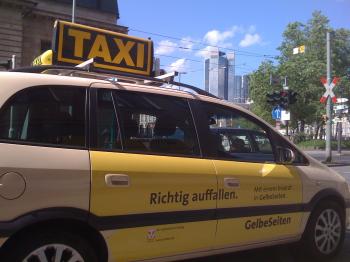Getting Around Frankfurt
Getting Around Frankfurt
All City Transport Options: What Locals Use and What’s Best for Tourists
General Overview
Getting around in Frankfurt works a bit differently than in many other major cities. First off, the public transport system here is surprisingly efficient — you'll find trams, buses, and the S-Bahn (suburban trains) all linked together really well. If you're trying to catch the U-Bahn (metro), those trains run frequently too, especially during rush hour (which tends to be mad around 8 AM and 5 PM).Now, let’s dig into some of the basics. Typically, a single trip inside the city will cost around €2.80, which is decent compared to other European cities like Paris or London. Keep in mind, you’ll want to avoid common tourist mistakes like thinking you can just hop on any tram or bus without validating your ticket first. You really need to stamp that ticket, or you might end up coughing up a fine, which definitely happened to me once.
Oh, and if you're planning to do a lot of sightseeing, consider getting the Frankfurt Card. It ends up costing €10.50 for one day, which compares well with a regular ticket if you’re hopping on and off constantly. Just remember, during peak hours, they might charge a bit more for certain services.
The S-Bahn line S8 from the Hauptbahnhof (main station) to the airport is particularly useful too — and at €4.25, it beats a cab hands down! On a recent day trip to Römer, I was pleasantly surprised at how efficient the connections were, especially since it was raining. Just check the weather before you head out; sometimes lines can be delayed due to storms (nothing like waiting for a train in the rain, right?).
One little hack I picked up: if you get on a tram, the front of the tram has no fare inspector stations, and they only check tickets back towards the end. They don't always check for tickets, so... you can consider that.
When it comes to riding during rush hour, all bets are off. Just expect to be packed in like sardines during the morning commute. I once accidentally elbowed an older gentleman while trying to hold onto a pole — embarrassing! Always be vigilant of your belongings too; pickpockets can be an issue in crowded spaces.
So, next time you’re in Frankfurt, don’t forget — check the weather, stamp your ticket, and know that the S-Bahn is your best friend! And hey, the currywurst stand by the Hauptwache is worth a stop too!
Types of Transport

popular with tourists
The metro in Frankfurt is an efficient and extensive system, serving key areas such as the city center, the Frankfurt Messe (trade fair grounds), and popular neighborhoods like Sachsenhausen and Bahnhofsviertel. To use the metro, you can purchase tickets from vending machines located at each station, with typical costs ranging from €2.75 for a single trip to €10.80 for a day pass that allows unlimited travel on the metro and other local transport. A great tip for tourists is to download the RMV mobile app, which provides real-time information on schedules, maps, and ticket purchases, saving you time and helping you navigate the system easily. Always validate your ticket before boarding; failure to do so may result in a fine. Lastly, while the metro is generally safe, be mindful of your belongings, especially during crowded times.

Taxis in Frankfurt are readily available throughout the city, with designated taxi stands located at major attractions like Römer, Hauptbahnhof (the main train station), and at shopping areas like Zeil. Fares start at around €3.50, with an average cost of €1.75 per kilometer; expect to pay approximately €15-€25 for a ride from the airport to the city center. It’s advisable to have a basic understanding of the destination's name in German, as some drivers may not speak English fluently. Always use licensed taxis - they are easily identifiable by their cream-colored vehicles and the illuminated “Taxi” sign on the roof. For your safety, consider keeping your belongings secured and take a moment to confirm the fare on the meter before starting the ride.

Auto travel in Frankfurt is quite convenient, as the city is well-connected with a network of major roads and highways, making it easy to reach key attractions like the Römer, Palmengarten, and the Museum District. Parking is widely available, with costs typically ranging from €1 to €3 per hour in city-center parking garages, and you can use cash or cards for payment. When driving, keep in mind that certain areas have low emission zones (Umweltzonen), so make sure your vehicle complies with the required emissions standards to avoid fines. A useful tip is to use GPS or local navigation apps that can help you avoid traffic congestion, especially during peak hours, which are usually from 7 AM to 9 AM and 4 PM to 6 PM. Lastly, always watch for cyclists and pedestrians, as Frankfurt is very bike-friendly, and obeying traffic signals is crucial for your safety.
Here you can learn about all types of transport in Frankfurt. What transport is available, how to reach tourist attractions and which mode of transport is optimal.
